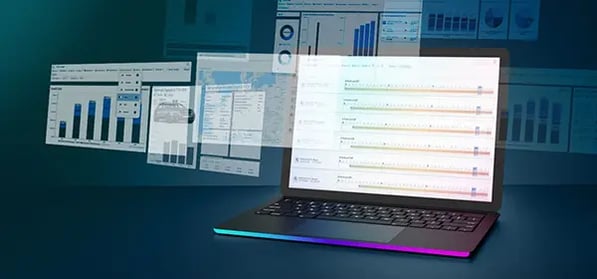3 min read
15: Why Excel & Co. are not enough for sales planning - and what suppliers need instead
 Erik Reiter
:
Jun 12, 2025 10:51:37 AM
Erik Reiter
:
Jun 12, 2025 10:51:37 AM
In the automotive industry, precise and forward-looking sales planning determines business success. Yet many suppliers still rely on Excel spreadsheets or inadequate software solutions for their sales planning – with serious consequences for transparency, efficiency, and competitiveness.
Lack of real-time data, redundant manual processes, and isolated planning silos lead companies to miss market opportunities, take on unnecessary risks, and fall short of their growth targets. But why is Excel not a sustainable solution – and what does modern sales planning for automotive suppliers look like?
The most common challenges include:
1. Lack of integration between market data and internal figures
OEM volumes fluctuate significantly – driven by economic developments, regulations, and emerging technologies. Suppliers who fail to align their planning with reliable market data, such as from S&P Global Mobility, risk building excess capacity or missing growth opportunities.
Additionally, planning data is often not linked directly to operational figures from ERP systems. When forecasts are based on assumptions instead of actual data, the risk of misjudgment increases.
2. Time-consuming and error-prone processes
Manually maintaining Excel spreadsheets involves constant copy & paste, version chaos, and high error rates. As soon as planning spans multiple levels – by customer, product, region, or project – complexity rises dramatically. A single typo or incorrect formula can lead to poor decisions.
The issue is further compounded when departments operate with different data sets. Sales, controlling, and management need a unified, continuously updated data foundation to eliminate errors.
3. Lack of flexibility for forecasts and scenarios
In a volatile market, one plan is not enough. Suppliers must simulate different scenarios – such as changes in market demand, currency shifts, or OEM production volumes.
With static spreadsheets or inflexible software, it's nearly impossible to create alternative forecasts in real time and make informed decisions. If it takes days to recalculate, you're reacting too slowly to market changes.
4. No direct connection to acquisition and pricing processes
Sales planning is often treated as a standalone activity. But current acquisition decisions and new market developments have a direct impact on strategic revenue planning.
If changes in volumes or margins don’t automatically flow into the planning process, companies cannot accurately assess profitability or make strategic investment decisions.
Transferring current prices and their development – including LTAs, technical changes, and project-specific adjustments – into planning structures is a major effort. Especially when multiple pricing components must be precisely represented and linked. With Excel, this is virtually impossible.
What does modern sales planning look like for automotive suppliers?
To remain competitive, suppliers need an integrated, digital solution for sales planning. A modern platform should meet the following core requirements:
1. Integration of market data and company KPIs
Sales planning must be based not only on internal figures but also on external forecasts. Direct integration with sources such as S&P Global Mobility enables more accurate assessments of market developments.
Linking with ERP data allows companies to analyze historical trends and create realistic growth forecasts. Rather than relying on manually updated Excel sheets, businesses get a dynamic, data-driven basis for decision-making.
2. Automation instead of manual data entry
Modern sales planning systems drastically reduce the effort needed for forecasts, reporting, and calculations. Data is entered once and is then available for all relevant analyses and reports.
Planning and reporting processes can be fully automated, providing up-to-date figures at the push of a button. Time currently wasted on copy & paste and Excel macros can instead be invested in strategic analyses and better decisions.
3. Flexible scenario planning for dynamic markets
Modern systems allow various future scenarios to be modeled – whether optimistic, realistic, or pessimistic forecasts. This enables suppliers to develop proactive strategies in response to demand fluctuations or changes in raw material prices.
Changes in OEM sales volumes can also be simulated directly, allowing production capacities to be adjusted in real time.
4. Seamless connection to quoting and pricing
An efficient sales planning solution should be integrated with pricing and quotation management. That means forecast changes flow directly into calculations, offers, and contracts – and vice versa.
This enables long-term profitability analyses to be automated and provides a transparent view of future revenue. Especially in the supplier business, where prices are often fixed for years, this is a crucial competitive advantage.
Conclusion: Sticking with Excel means falling behind
Excel & Co. are not just error-prone – they actively hinder growth. Modern, integrated sales planning allows automotive suppliers to act with greater precision, speed, and strategic foresight.
With a digitalized, automated, and interconnected solution, companies can avoid errors, anticipate market developments, and manage their planning dynamically.
Digital Automotive offers a powerful solution for suppliers ready to elevate their sales planning. The platform integrates market data, company KPIs, and pricing management into a single, intelligent environment – delivering maximum efficiency and transparency.
👉 Learn more: https://digital-automotive-supplier.com/de/sales-planning




